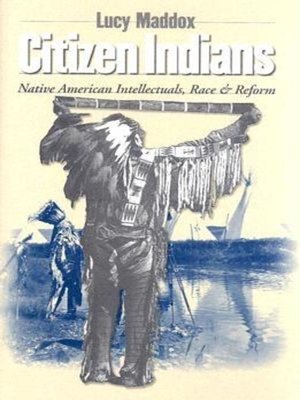
Sign up to save your library
With an OverDrive account, you can save your favorite libraries for at-a-glance information about availability. Find out more about OverDrive accounts.
Find this title in Libby, the library reading app by OverDrive.



Search for a digital library with this title
Title found at these libraries:
| Loading... |
By the 1890s, white Americans were avid consumers of American Indian cultures. At heavily scripted Wild West shows, Chautauquas, civic pageants, expositions, and fairs, American Indians were most often cast as victims, noble remnants of a vanishing race, or docile candidates for complete assimilation. However, as Lucy Maddox demonstrates in Citizen Indians, some prominent Indian intellectuals of the era—including Gertrude Bonnin, Charles Eastman, and Arthur C. Parker—were able to adapt and reshape the forms of public performance as one means of entering the national conversation and as a core strategy in the pan-tribal reform efforts that paralleled other Progressive-era reform movements.
Maddox examines the work of American Indian intellectuals and reformers in the context of the Society of American Indians, which brought together educated, professional Indians in a period when the "Indian question" loomed large. These thinkers belonged to the first generation of middle-class American Indians more concerned with racial categories and civil rights than with the status of individual tribes. They confronted acute crises: the imposition of land allotments, the abrogation of the treaty process, the removal of Indian children to boarding schools, and the continuing denial of birthright citizenship to Indians that maintained their status as wards of the state. By adapting forms of public discourse and performance already familiar to white audiences, Maddox argues, American Indian reformers could more effectively pursue self-representation and political autonomy.
|By the 1890s, white Americans were avid consumers of American Indian cultures. At heavily scripted Wild West shows, Chautauquas, civic pageants, expositions, and fairs, American Indians were most often cast as victims, noble remnants of a vanishing race, or docile candidates for complete assimilation. However, as Lucy Maddox demonstrates in Citizen Indians, some prominent Indian intellectuals of the era—including Gertrude Bonnin, Charles Eastman, and Arthur C. Parker—were able to adapt and reshape the forms of public performance as one means of entering the national conversation and as a core strategy in the pan-tribal reform efforts that paralleled other Progressive-era reform movements.Maddox examines the work of American Indian intellectuals and reformers in the context of the Society of American Indians, which brought together educated, professional Indians in a period when the "Indian question" loomed large. These thinkers belonged to the first generation of middle-class American Indians more concerned with racial categories and civil rights than with the status of individual tribes. They confronted acute crises: the imposition of land allotments, the abrogation of the treaty process, the removal of Indian children to boarding schools, and the continuing denial of birthright citizenship to Indians that maintained their status as wards of the state. By adapting forms of public discourse and performance already familiar to white audiences, Maddox argues, American Indian reformers could more effectively pursue self-representation and political autonomy.






